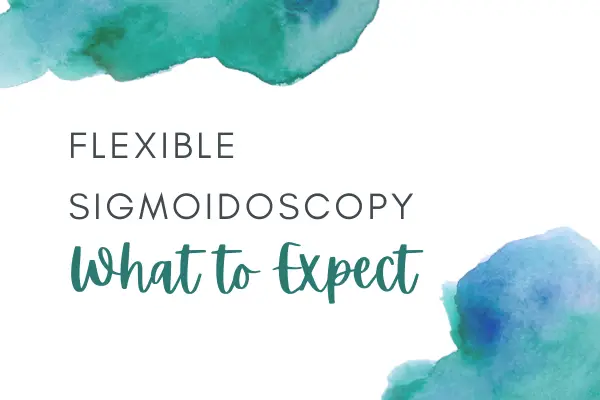
Flexible Sigmoidoscopy: What to Expect
What to expect from your flex sigmoidoscopy
A flexible sigmoidoscopy can be performed by your gastroenterologist to diagnose issues with rectal bleeding, chronic diarrhea, a change in bowel habits, and abdominal pain, among other problems with the intestines.
According to Johns Hopkins, a flexible sigmoidoscopy “is an endoscopic procedure that allows your doctor to examine the rectum and lower colon. A sigmoidoscope is a specialized endoscope, a thin, flexible lighted tube with a camera at the tip that your doctor uses to visualize the area.”
I just went through the procedure last week due to my bowel endometriosis. I am having excision surgery soon, and my surgeon wanted to see if the endometriosis had gone all the way through my bowels (luckily it hadn’t).
If you suspect you may have bowel endometriosis, I highly recommend the video below from the Endometriosis Foundation of America. It discusses the difference between Irritable Bowel Syndrome and bowel endometriosis.
*This page contains affiliate links to products I recommend. If you purchase something from this page, I may receive a small percentage of the sale at no extra cost to you.
Getting Ready for the Procedure
At home
Your doctor will give you detailed directions for how to prepare for your procedure. It is very important to follow these directions exactly.
For me, that meant not eating or drinking after midnight the night before. This is pretty standard for any procedure that involves anesthesia.
The morning of your procedure, you will probably have to use an enema or two. This will clear out your tract so the doctor can see clearly.
I had to use two fleet enemas. Because of my bowel endometriosis, this was a pretty uncomfortable experience for me.
Arrival
At the hospital, you’ll have to check in and fill out any necessary paperwork. You’ll sit in the waiting room until they are ready for you.
Don’t bring anything valuable with you, since you’ll have to leave everything in your room during the procedure. A book to pass the time is all you need.
COVID
Be prepared and make yourself familiar with your hospital’s COVID procedures. You will probably be required to get a COVID test a few days before the procedure.
You’ll also have to wear a mask at all times, obviously. You will need someone to drive you, but they might not be able to come inside the hospital.
I had my procedure at the beginning of December 2020 and my husband was not allowed inside the hospital. He dropped me off out front and then waited in the parking garage.
When I was discharged, the nurse called my husband and walked me out to the car. With such a quick procedure, it wasn’t a big deal that my husband had to wait outside.
Procedure Prep
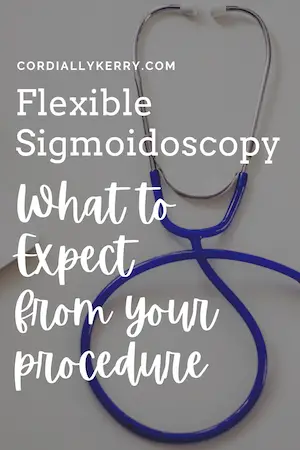
With the nurse
Once you’re called back, the nurse will take you to your room where you’ll change into a hospital gown.
The nurse will ask you tons of questions, take your blood pressure and pulse, and get your IV started.
Doctors in and out
Lots of doctors and nurses will start coming in and out of your room. They’ll ask you a few questions and make sure you understand your upcoming procedure. You’ll have to sign a few papers, giving consent for the procedure.
There might be a fair amount of waiting at this point, depending on your surgeon’s schedule. I was lucky and didn’t spend much time in the hospital room before they wheeled me back.
Time for the flexible sigmoidoscopy
When they’re ready, they will wheel you back to the operating room. If you wear glasses, you’ll have to leave them in your room. My vision is pretty terrible, so I found this to be very disorienting.
Once you’re in the room, the anesthesiologist will put the nasal cannula in your nose (the oxygen tube). They instruct you to lay on your left side with your knees pulled up.
Then, the anesthesiologist will put the sleepy meds in your IV and it’s lights out.
Post Surgery
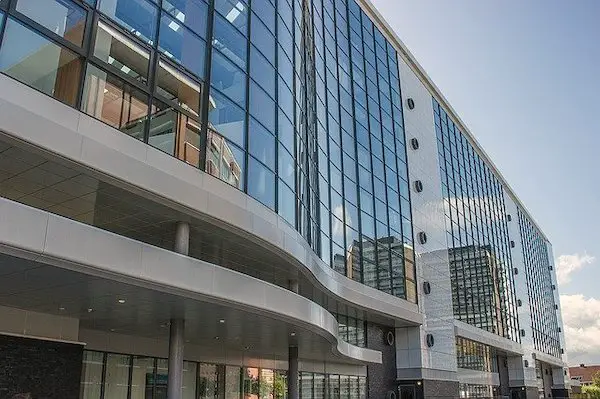
Waking
You’ll wake up and feel pretty groggy. Luckily, this procedure is usually pretty fast (like, ten minutes!), so it won’t take you too long to wake up.
The doctor will come in and share his findings with you. Mine came in literally as soon as I woke up and I was still high as a kite. I had to ask the nurse go over it again with me when I was more lucid.
You’ll spend some time just waking up and chatting with the nurse. Normally, you’ll have something to eat and drink.
My nurse gave me a ginger ale and graham crackers to go. She told me they are trying to avoid patients taking their masks off as much as possible, which makes sense.
Discharge
Once you’re awake and you can walk, the nurse will go over your discharge packet and remove your IV.
You’ll get dressed on your own. Make sure you check the room and have all of your belongings.
The hospital may have your ride meet you in the waiting room, or the nurse may walk to out to your car.
Recovery
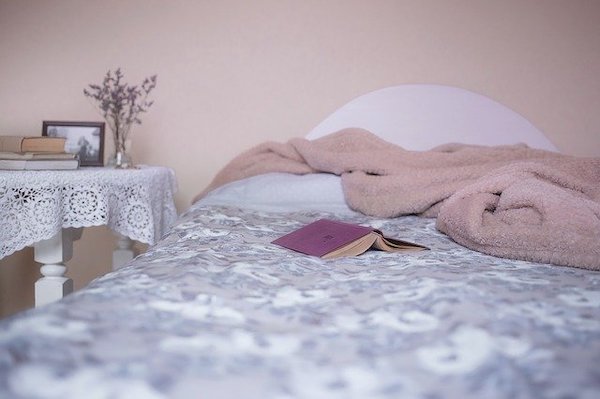
Recovery from the anesthesia will be a little bit different for everyone. Expect to be tired for the rest of the day. You’ll probably take a nice long nap when you get home.
You’ll be hungry, but try to eat a light meal first, like soup. Sometimes anesthesia can upset your stomach. You’ll also want to hydrate as much as you can to help flush out the anesthesia.
Your bowel function should be normal after your flexible sigmoidoscopy (whatever “normal” means for you). Follow any discharge directions your doctor gave you.
Common Questions
How long does a sigmoidoscopy take?
Not long at all! My doctor told me that a typical procedure takes ten to fifteen minutes. Mine was about ten minutes, and that’s including a biopsy.
What is the difference between a flexible sigmoidoscopy and a colonoscopy?
The main difference between the two is that a colonoscopy examines the entire colon, whereas a flexible sigmoidoscopy only looks at the lower colon. There is also a lower risk of perforation with the sigmoidoscopy.
The prep can be different too. A flexible sigmoidoscopy only requires the use of enemas, but a colonoscopy requires the dreaded bowel prep.
A flexible sigmoidoscopy is a fairly simple procedure that can help evaluate abdominal and intestinal problems.
Related Articles:
Laparoscopic Surgery for Endometriosis: What to Expect
15 Must-Haves for Laparoscopy Recovery
Chronic Illness Gift Guide: Thoughtful Gifts She’ll Love
Flexible Sigmoidoscopy: What to Expect
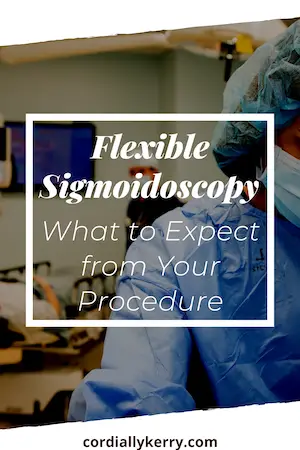
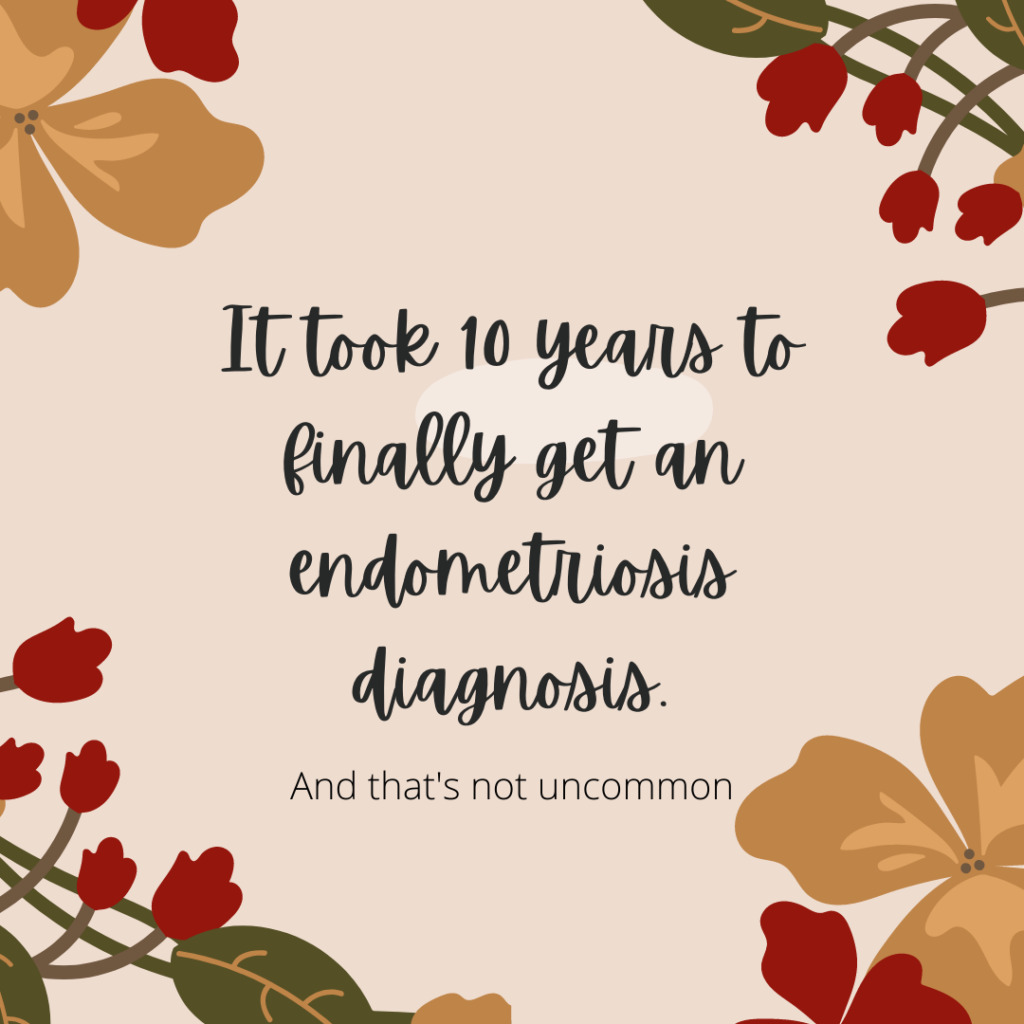

Leave a Reply